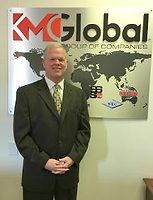Manufacturing News
OpX Leadership Network finds new solutions

New solutions groups get their start from ideas offered at PMMI forums. If the OpX executive council approves a suggested topic, it appoints a solutions group to provide deliverables that help CPGs get the most from their equipment, suppliers and workforce. Source: OpX Leadership Network.
Founded by PMMI in 2011 as the Alliance for Innovation and Operational Excellence (AIOE), the OpX Leadership Network has been working overtime to create new solutions groups tasked with giving CPGs the tools they need to fine-tune and improve their businesses. These groups, comprised of CPG manufacturers and OEM equipment suppliers, have already released several deliverables aimed at helping plant floors and enterprises function at peak performance—solving problems together that include workforce engagement, equipment issues (e.g., TCO and OEE), sustainability, hygienic equipment design, factory acceptance tests and more.
A solutions group is not a casual invention. When an idea for a new group is floated at a PMMI forum, the OpX executive council meets to consider whether it is worth pursuing as a new solutions group. “Generally, the way it works is the OpX executive council will pull together a smaller task force to think through the topics,” says Stephen Perry, OpX Leadership Network managing director. If the task force meets and suggests a specific, proposed solutions group has merit and white space, and the task force wants to proceed with a new group, the executive council will develop a full-fledged solutions group where the OEMs and CPGs work together to produce deliverables. “In general, there may be 25 or 30 people in the solutions group, usually about 80 percent CPGs and 20 percent OEMs,” adds Perry.
Deliverables or work products published by solutions groups include printed publications, templates, assessment tools, guidance documents, examples, checklists and various downloadable tools, all of which are freely accessible on the OpX website. Perry looks for CPG companies that want to make use of these deliverables. “To help drive adoption, we try to engage CPG companies and OEMs that are actually beginning to conduct some informal or formal pilots on some of these work projects,” says Perry. From these pilots come metrics and experiences that are recorded.
“We are capturing the experiences of these pilots and any metrics that show improvement in a process,” continues Perry. “For example, if you adopt a TCO document, you would expect to see some improvement and cost reduction or a quicker process.”
Many of the CPGs have been successful with adopting OpX guidance. For example, Manufacturing Workforce Engagement was published in 2015, and pilot programs have been underway in several CPG plants.
According to Steve Schlegel, OpX Leadership Network managing director, the idea behind the workforce development effort is for successful companies to move from a traditional, hierarchical workplace environment to one that engages its workforce and recognizes the value of people as a core asset of the company. A Readiness Assessment tool was made available in March in two versions—one for management and one for associates—for processors that want to gauge whether workforce engagement is doable at their facility. In addition, a framework and resource tool box provide scenarios, guidance and the process to achieve positive business results.
Initiated this year, the worker safety solutions group was designed to assist CPGs, OEMs and other suppliers in implementing best practices to mitigate conditional (equipment, line configuration, materials and environment) and behavioral (thinking, acting, choosing and deciding) risks related to worker safety. Key deliverables will include a framework of worker safety, the protocols for job safety analyses, a gap assessment tool, a roadmap for OEMs as to what is required by the CPGs and the tools to identify, collect and benchmark leading indicators.
Also begun this year, the clean-in-place (CIP) solutions group was designed to create best practices and protocols to harmonize industry on critical sanitation procedures. Its purpose is to provide guidance to assist CPGs in optimizing the CIP process while assuring safety. Deliverables will include definitions of key CIP parameters, tools for establishing and designing system SOPs and tools for managing and sustaining CIP best practices. A lot of information already is available on CIP, especially for the dairy industry. According to Perry, that’s the problem: CIP needs to be extended to other industries. The solutions group will apply many of these dairy best practices to other food and beverage applications.
Also in the works, according to Schlegel, are potential groups for industrial security (actually called remote access) and women in processing and packaging.
For more information, visit www.opxleadershipnetwork.org or contact Steve Schlegel, sschlegel@opxleadershipnetwork.org.
Looking for a reprint of this article?
From high-res PDFs to custom plaques, order your copy today!






